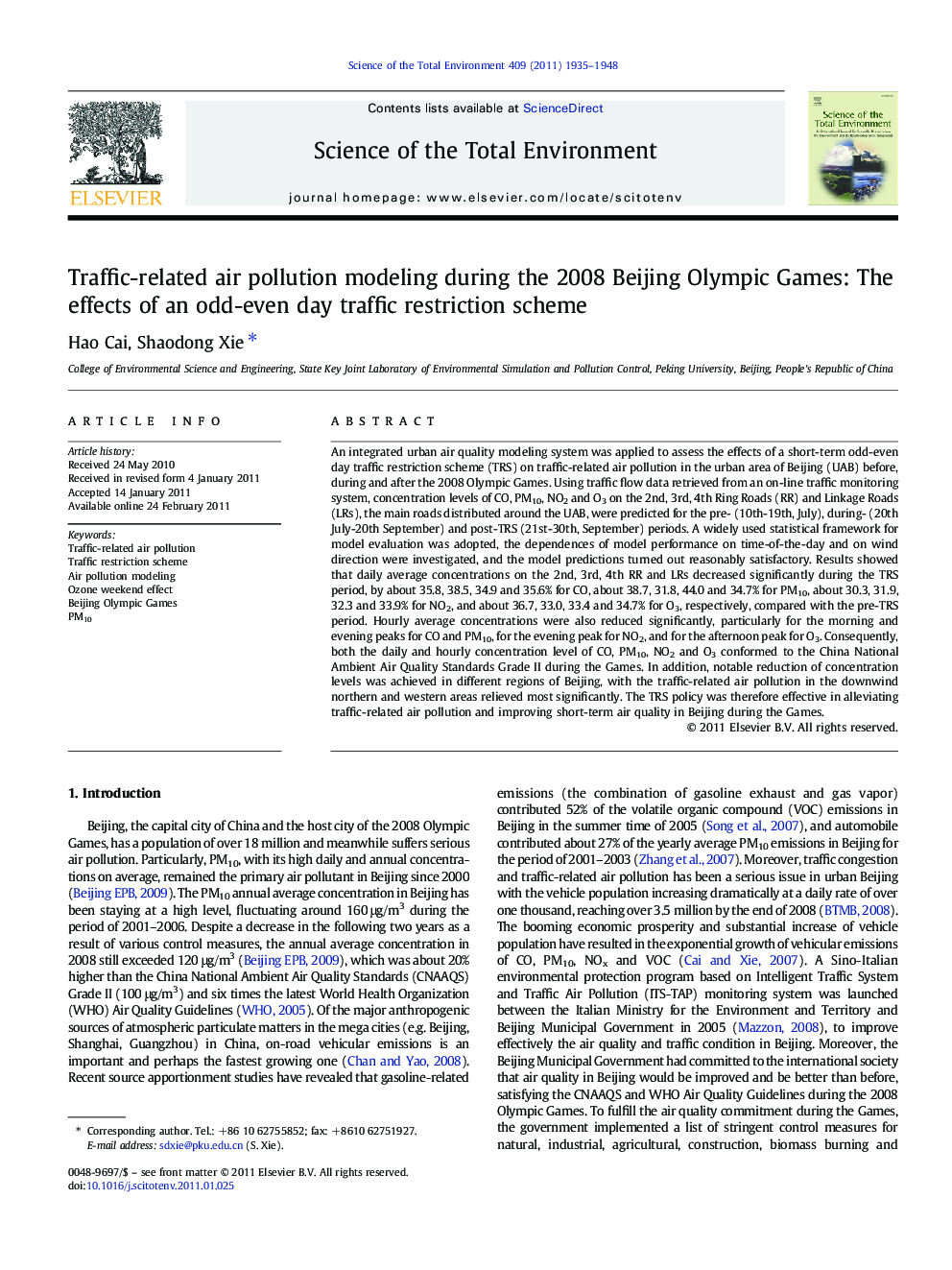| کد مقاله | کد نشریه | سال انتشار | مقاله انگلیسی | نسخه تمام متن |
|---|---|---|---|---|
| 4430231 | 1619852 | 2011 | 14 صفحه PDF | دانلود رایگان |

An integrated urban air quality modeling system was applied to assess the effects of a short-term odd-even day traffic restriction scheme (TRS) on traffic-related air pollution in the urban area of Beijing (UAB) before, during and after the 2008 Olympic Games. Using traffic flow data retrieved from an on-line traffic monitoring system, concentration levels of CO, PM10, NO2 and O3 on the 2nd, 3rd, 4th Ring Roads (RR) and Linkage Roads (LRs), the main roads distributed around the UAB, were predicted for the pre- (10th-19th, July), during- (20th July-20th September) and post-TRS (21st-30th, September) periods. A widely used statistical framework for model evaluation was adopted, the dependences of model performance on time-of-the-day and on wind direction were investigated, and the model predictions turned out reasonably satisfactory. Results showed that daily average concentrations on the 2nd, 3rd, 4th RR and LRs decreased significantly during the TRS period, by about 35.8, 38.5, 34.9 and 35.6% for CO, about 38.7, 31.8, 44.0 and 34.7% for PM10, about 30.3, 31.9, 32.3 and 33.9% for NO2, and about 36.7, 33.0, 33.4 and 34.7% for O3, respectively, compared with the pre-TRS period. Hourly average concentrations were also reduced significantly, particularly for the morning and evening peaks for CO and PM10, for the evening peak for NO2, and for the afternoon peak for O3. Consequently, both the daily and hourly concentration level of CO, PM10, NO2 and O3 conformed to the China National Ambient Air Quality Standards Grade II during the Games. In addition, notable reduction of concentration levels was achieved in different regions of Beijing, with the traffic-related air pollution in the downwind northern and western areas relieved most significantly. The TRS policy was therefore effective in alleviating traffic-related air pollution and improving short-term air quality in Beijing during the Games.
Research Highlights
► The current modeling study shows that traffic restriction scheme proves effective in reducing short-term traffic-related air pollution.
► A widely accepted statistical framework for model evaluation was used and justified the credibility of the modeling results.
► Daily average, hourly average and peak concentrations of major air pollutants decreased in response to the TRS policy.
► Notable reduction of concentration levels was achieved in different regions of the UAB.
Journal: Science of The Total Environment - Volume 409, Issue 10, 15 April 2011, Pages 1935–1948